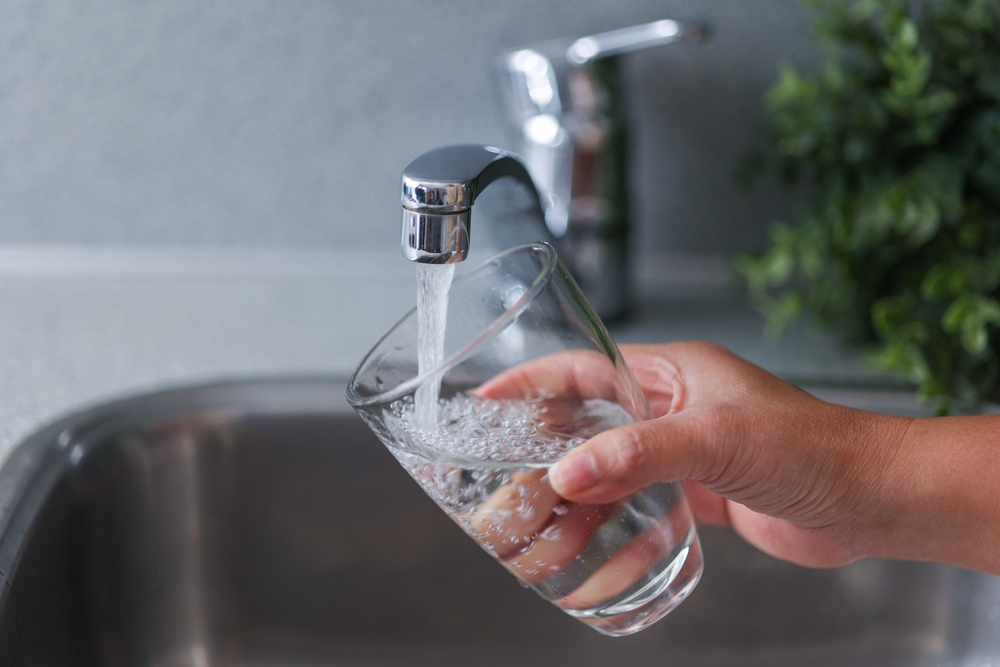There are many options for keeping yourself hydrated around the home, but nothing is simpler than filling up your glass directly from the tap. If you’re skeptical of the cleanliness of tap water, however, then a reverse osmosis water filtration system may be the ideal solution for you.
What Is A Reverse Osmosis Water Filtration System?
A reverse osmosis water filtration system takes tap water and filters out impurities, delivering clean drinking water to an additional tap typically installed in a kitchen sink.
Reverse Osmosis Filtration Benefits
Removes Impurities
An RO system’s filters remove many potentially harmful impurities that can be found in tap water, including:
- Fluoride
- Chlorine
- Chloramine
- Detergents
- Lead
- Pesticides
- Nitrates
- Sulfates
Improves Odour & Taste
Bad odours and tastes are typically caused by the impurities that can be found in tap water. By filtering these out, you’re left with more pure and fresh water to enjoy.
Less Wasteful
Compared to the production, transportation, and waste generated by bottled water, an RO filtration system is much more environmentally friendly.
Easy To Use
It doesn’t get much easier than turning on a tap. No more remembering to buy more bottles or filling up a filtration jug.
Easy To Maintain
There are only a few components to an RO system, making it fairly simple to maintain. All you’ll need to remember is to periodically replace your filters.
How A Reverse Osmosis Filtration System Works
An RO system is essentially a buffer between your tap water and your faucet. Water enters the system and passes through a series of filters. Clean water is then stored in a tank, which is then accessed through your faucet. After taking water, more water is fed into the system to be ready for the next time you’re thirsty.
Here’s a more detailed breakdown of the components of a reverse osmosis filtration system:
1. Cold Water Line Valve
This is where your RO system connects to your regular tap water supply.
2. Pre-Filter(s)
Tap water then passes through your pre-filters to do an initial removal of impurities, such as carbon and sediment. Depending on your usage, you’ll want to replace your pre-filters every 6 months or so.
3. Reverse Osmosis Membrane
The membrane is the heart of your RO system, being the main filter that removes a wide variety of contaminants. The membrane will need to be changed approximately every 2 years, or whenever you notice a significant drop in water pressure when using the tap.
4. Storage Tank
After passing through the membrane, water then flows to a storage tank to await distribution through your tap. This will be stored under the counter wherever your RO faucet is placed.
5. Post-Filter
On its way to the faucet, the water passes through one last filter (typically carbon). Any odours or tastes remaining in the water will be dealt with at this stage.
6. Automatic Shut Off Valve
The valve helps to control water flow. If the storage tank is full, your valve will close to stop more water from flowing into the membrane. When you take more water from the faucet, the valve re-opens to send more water through.
7. Flow Restrictor
This regulates the water flowing through the membrane, so that it only accepts whatever it can handle. Without it, water would mostly flow down into the drain line along with the contaminated water, rather than moving along to the faucet.
8. Faucet
Your faucet is what you will use to access your water every day.
9. Drain Line
After water has been filtered by the membrane, there are then two streams: clean and contaminated water. The clean water moves from the membrane to your storage tank, while contaminated water flows down the drain line.
How Much Does It Cost?
Price will vary depending on the quality of system you purchase but expect to spend anywhere from $200-$600.
To find out how much it costs to have a reverse osmosis system installed, get a quote from a water filtration and purification specialist today!
